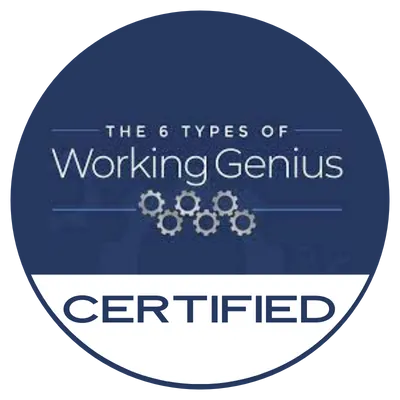
Three Steps To Create the Entrepreneurial Culture You’ve Always Wanted in Your Midmarket Business
“I wish my employees were more entrepreneurial.” Over the past 27 years of working with midmarket business owners I’ve heard this over and over again. If you want entrepreneurial employees, you need an entrepreneurial culture.
We all know Deming’s famous line, ”Culture eats strategy for breakfast.” I believe that an entrepreneurial culture creates strategy and makes it come alive.
So how do you create an entrepreneurial culture? Here are three ways:
Measure and Explain Value
Engage Employees to Work ON the Business
Recognize and Reward Entrepreneurial Spirit
Let’s unpack each of these.
1. Measure and Explain Value
Midmarket companies track revenue and profit growth. Enterprise companies track their stock price, a measurement of the value of the company. Entrepreneurs recognize the endgame of creating value to not only generate income now but to create an asset that can be sold. (Read Why Value is the Most Important Metric Every Midmarket Business Should Track.)
Since most employees are primarily compensated by salaries they likely see the company in the same way. Through their eyes, success looks like growing revenue and profit.
Entrepreneurs understand that while revenue and profit are important, the quality of that revenue and profit is also important. Things like contracted recurring revenue, continually-improved processes, and innovation create value.
So, the first step toward an entrepreneurial culture is to teach your key leaders about value. First, you measure the current valuation of the company, something I can do in less than an hour using an algorithm connected to a database of over 65,000 recent exits. (Message me for details.) In the process, you benchmark your company against the key value drivers.
With the valuation and value drivers in place, a great idea is to educate your leadership team on the value of the company and how the company is doing with the key value drivers. Together, the leadership team can come up with a value creation plan. (Message me for details.)
2. Engage Employees to Work ON the Business
Every entrepreneur has heard the line, “You need to do more than work IN the business, you need to work ON the business.” Very true. However, in most companies, “working ON the business” ends up being the function of the visionary leader. Everyone else puts their heads down and works in the business.
Even well-run companies with business operating systems can get stuck working IN the business. Quarterly and weekly team meetings end up focusing on resolving issues. While it could be argued that resolving ISSUES is working ON the business, rarely do these companies have a structured format for developing new IDEAS. Leadership teams under the guidance of an integrator end up dedicating energy to EXECUTION rather than EVOLUTION and EXPANSION.
How do you fix this? Assembled teams of forward-thinking employees to come up with ideas to create value. Unleash employees with Working Geniuses of Wonder, Invention, and Discernment in cross-functional teams that focus on your Value Creation Engines. Target key areas like strategic innovation, revenue growth, and profit growth. Vern Harnish calls these “Strategic Thinking Teams.” Jim Collins calls these “Councils.”
As you get employees from across the organization working ON the business, you unleash an entrepreneurial culture.
3. Recognize and Reward Entrepreneurial Spirit
Celebrate success. Celebrate failure. Celebrate the actions your councils take to improve the business. Recognize this at your company meetings. Reward value creation with financial incentives. Make it fun. (Read What’s On Your Company’s Innovation Wall?)
As you measure valuation, engage employees to work ON the business, and recognize the entrepreneurial spirit, you will develop an entrepreneurial culture. The fruit of this will be value creation. Whether you plan to sell your business someday (52% of business exits are unplanned due to death, divorce, disability…) or you want to enjoy the freedom of an entrepreneurial culture, the first step is to measure the value of your business.
What’s The Valuation of Your Business?
How long has it been since you measured the value of your business? I believe this is something that needs to be done every 90 days. Fortunately, there is a way to accurately estimate the value of your business without an accounting proctology exam. At Value Creation Engines we do this using a tool that benchmarks your business against a data set of 65,000 recent business sales, a database of recent industry multiples, and the eight value drivers. It takes less than an hour and it may be the eye-opening first step toward finally creating the entrepreneurial culture you’ve always wanted. Message me for details.
Originally published on Darrell Amy's LinkedIn.
Watch the recording here:
FREE BUSINESS VALUATION
Large Call to Action What is Your Business Worth?
You can Discover the Value of Your Business in Less than 20 Minutes!
Join 70,000 business owners and get your score on the 8 Factors That Drive Your Company’s Value, a comprehensive analysis of your score and a detailed action plan for how to improve your score on each.

DISCOVER HOW YOUR COMPANY CAN UNLEASH STRATEGIC INNOVATION
Attract, engage, and retain top talent
Integrate new technologies like AI
Build competitive advantage
Create profitable growth
"Wow! This is incredibly powerful! My integrator needs to see this right away.
Chris C.
Visionary and CEO


We run our business on EOS
We run our business on EOS



